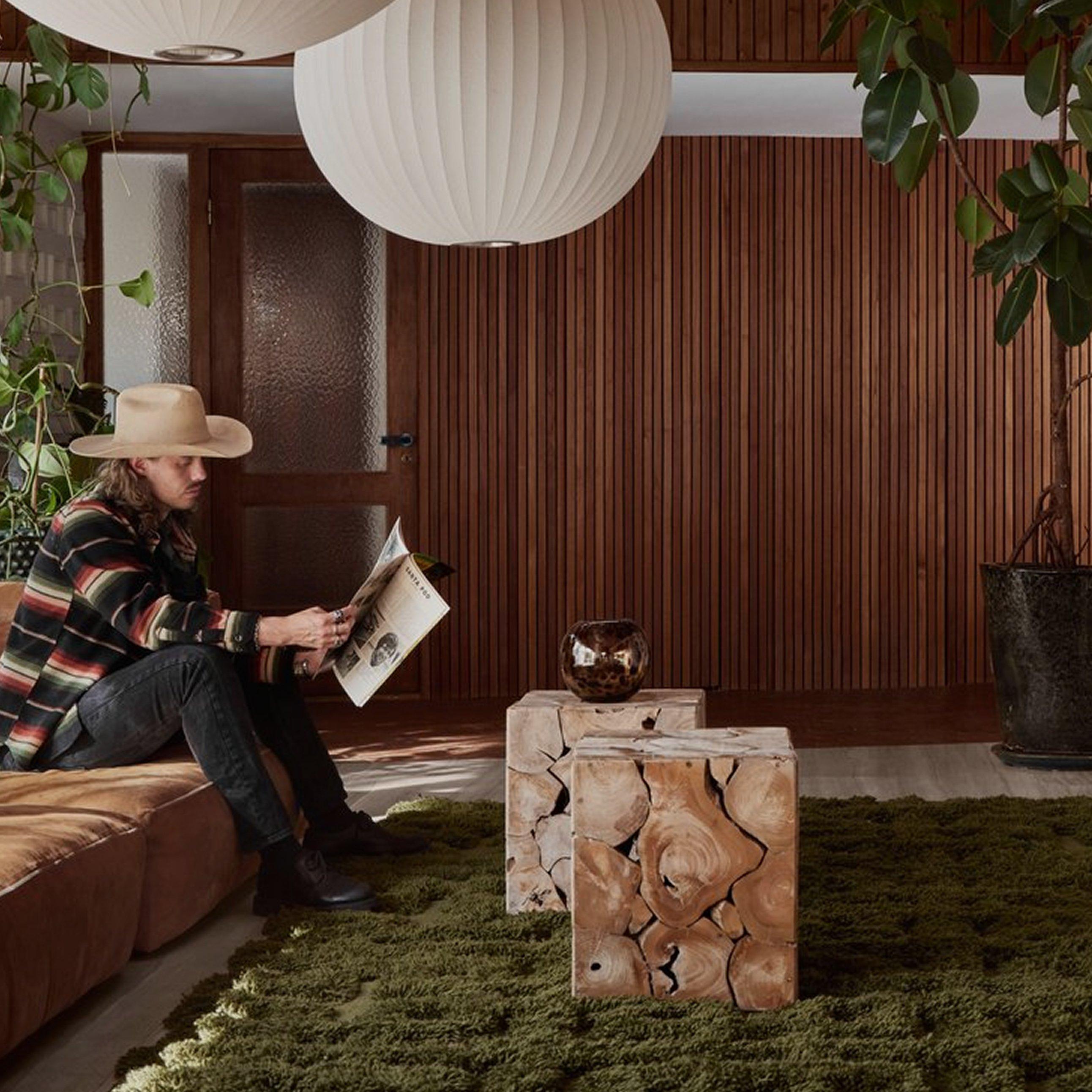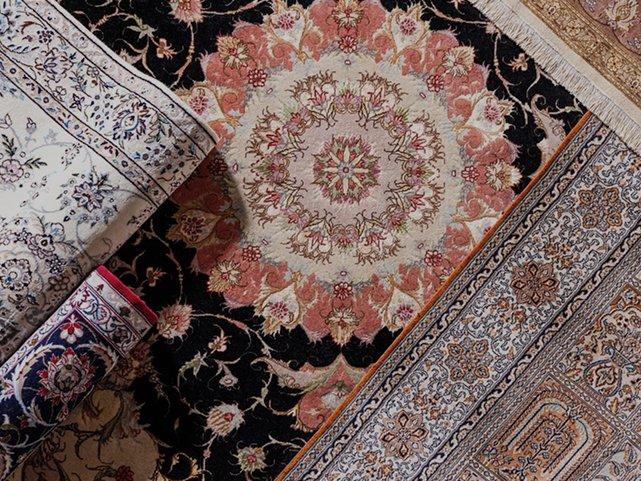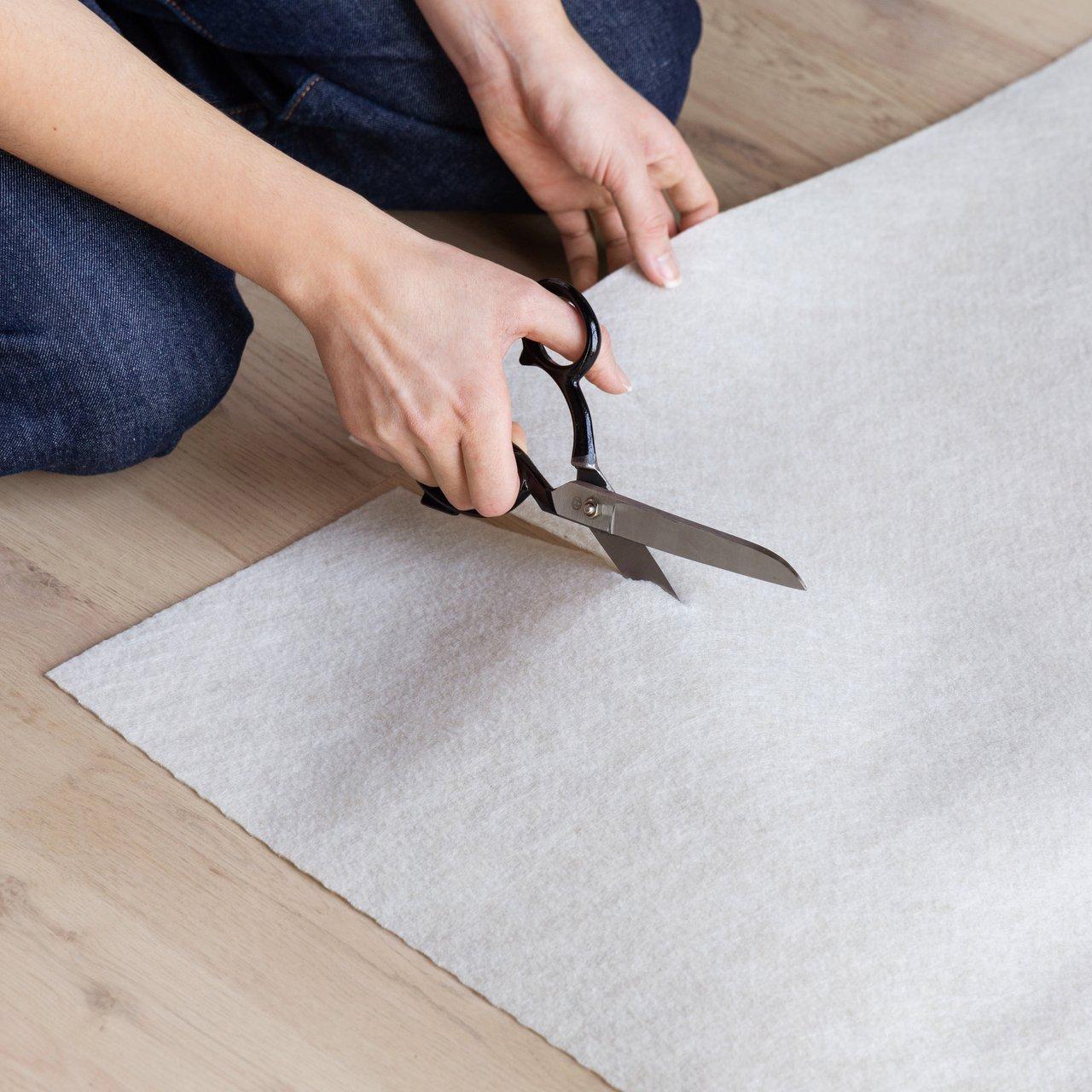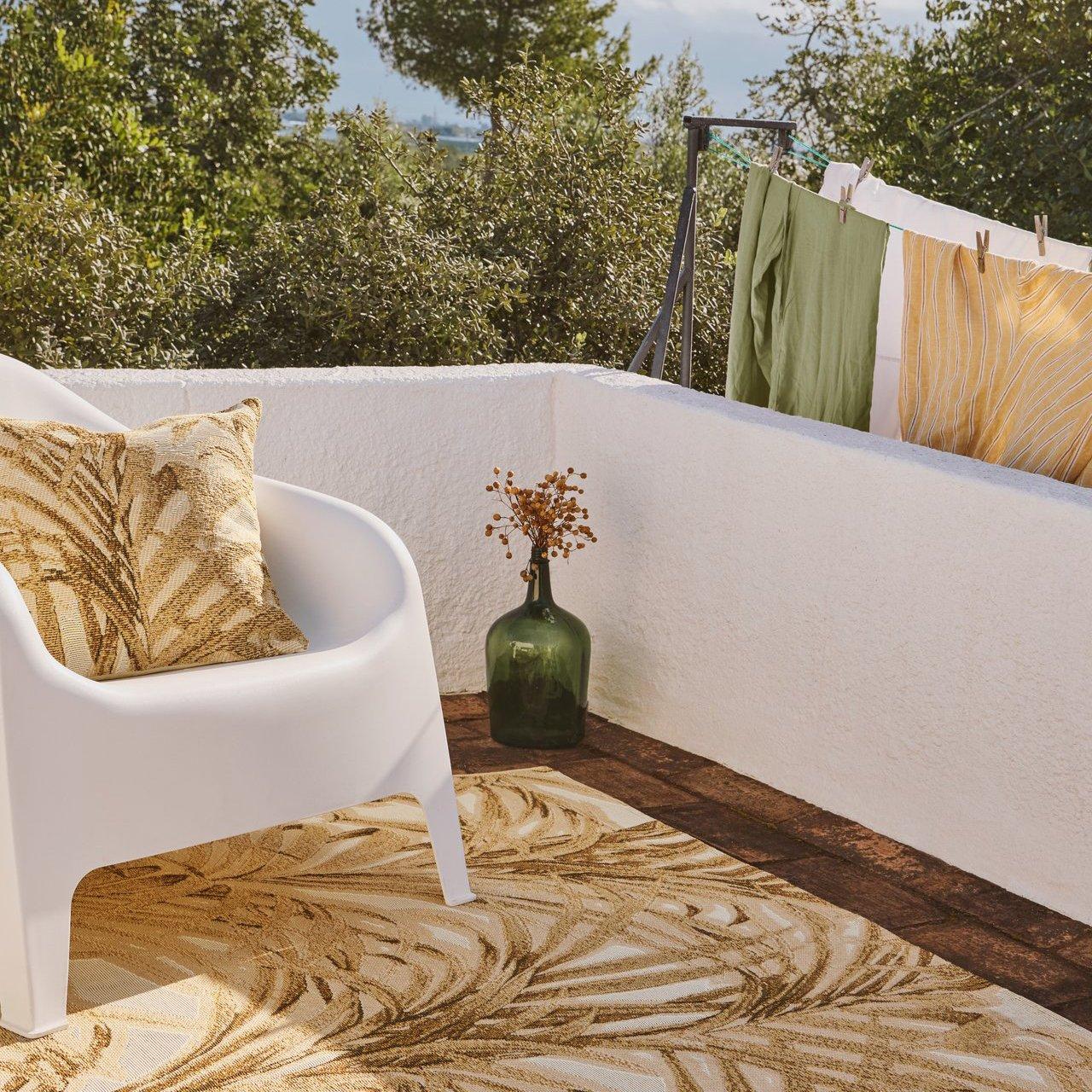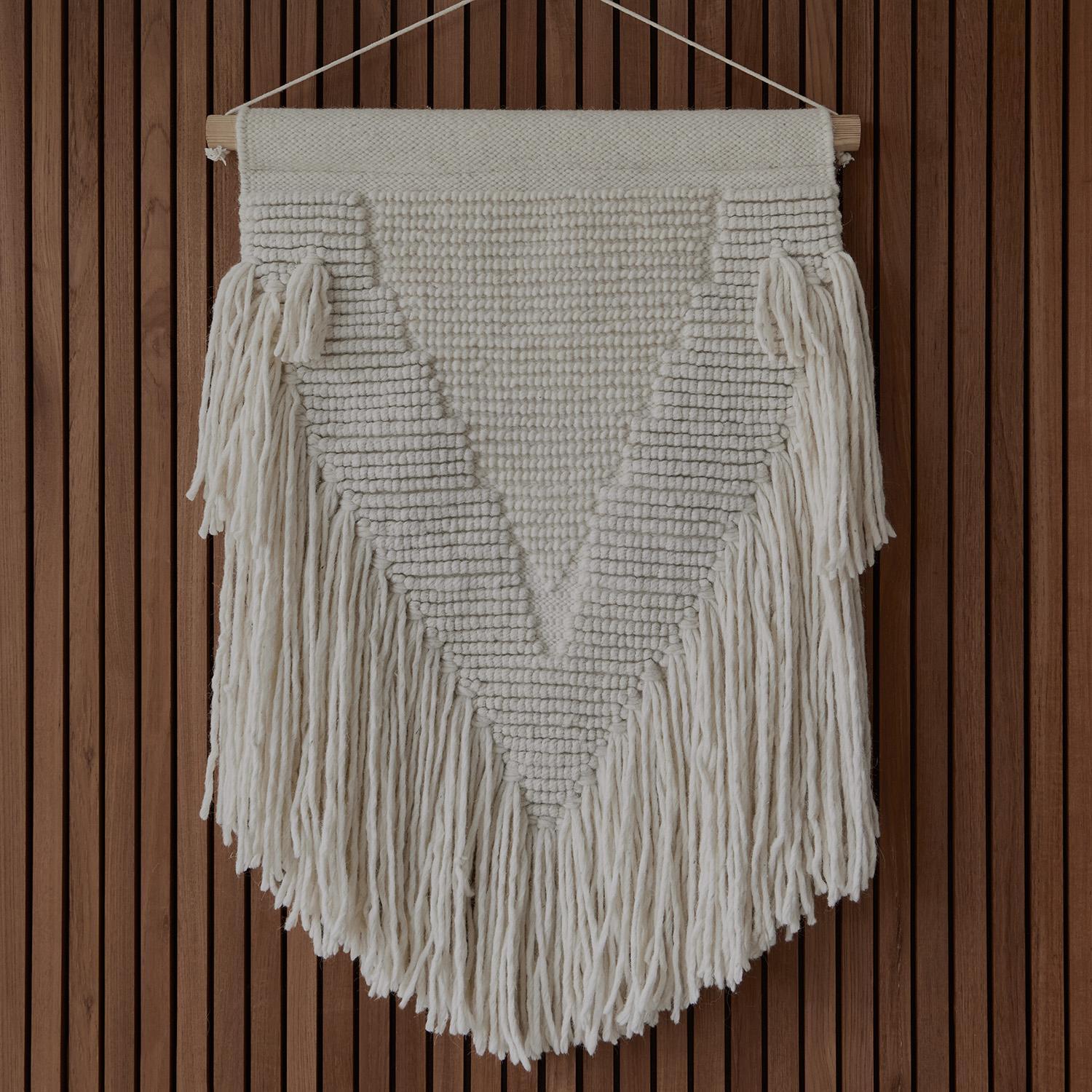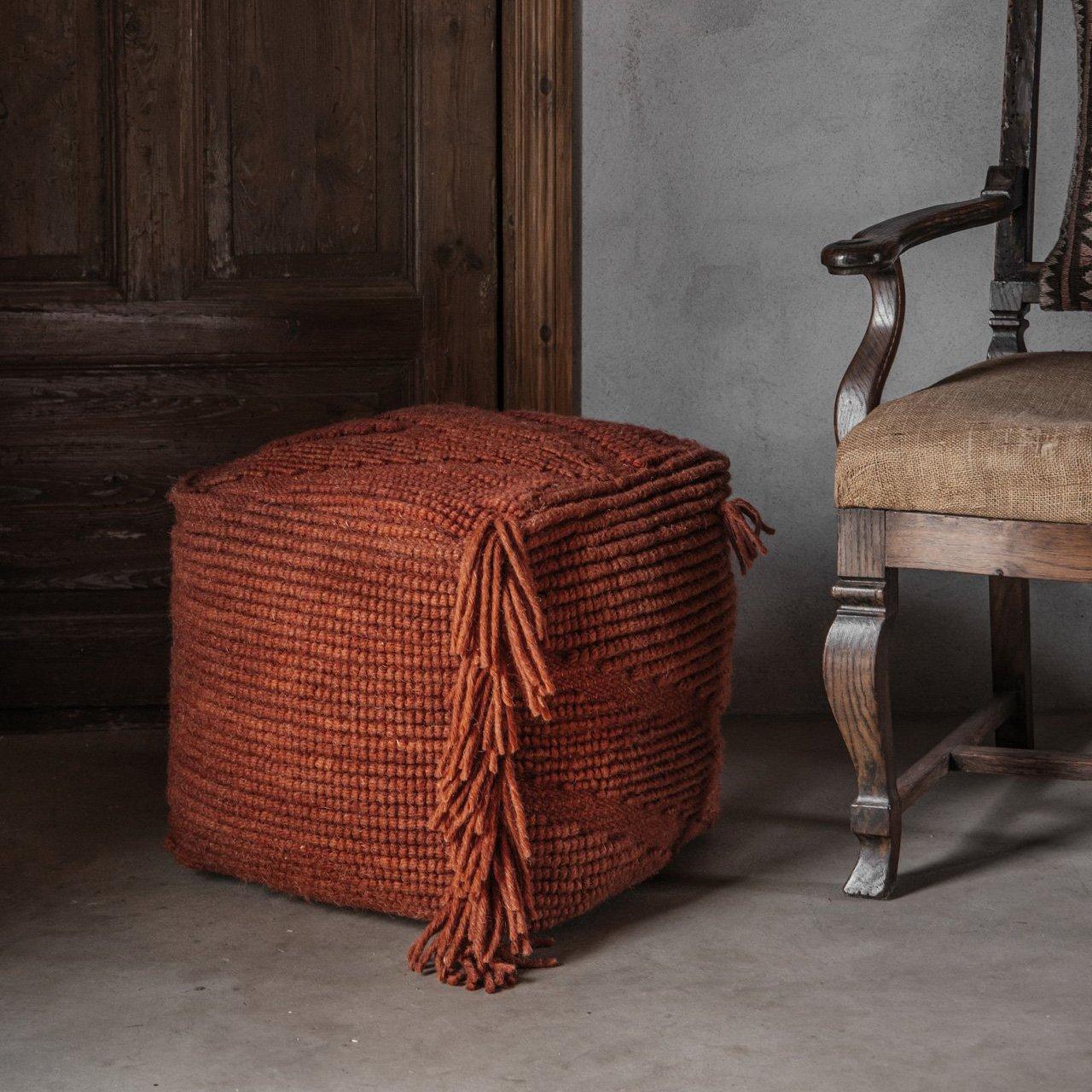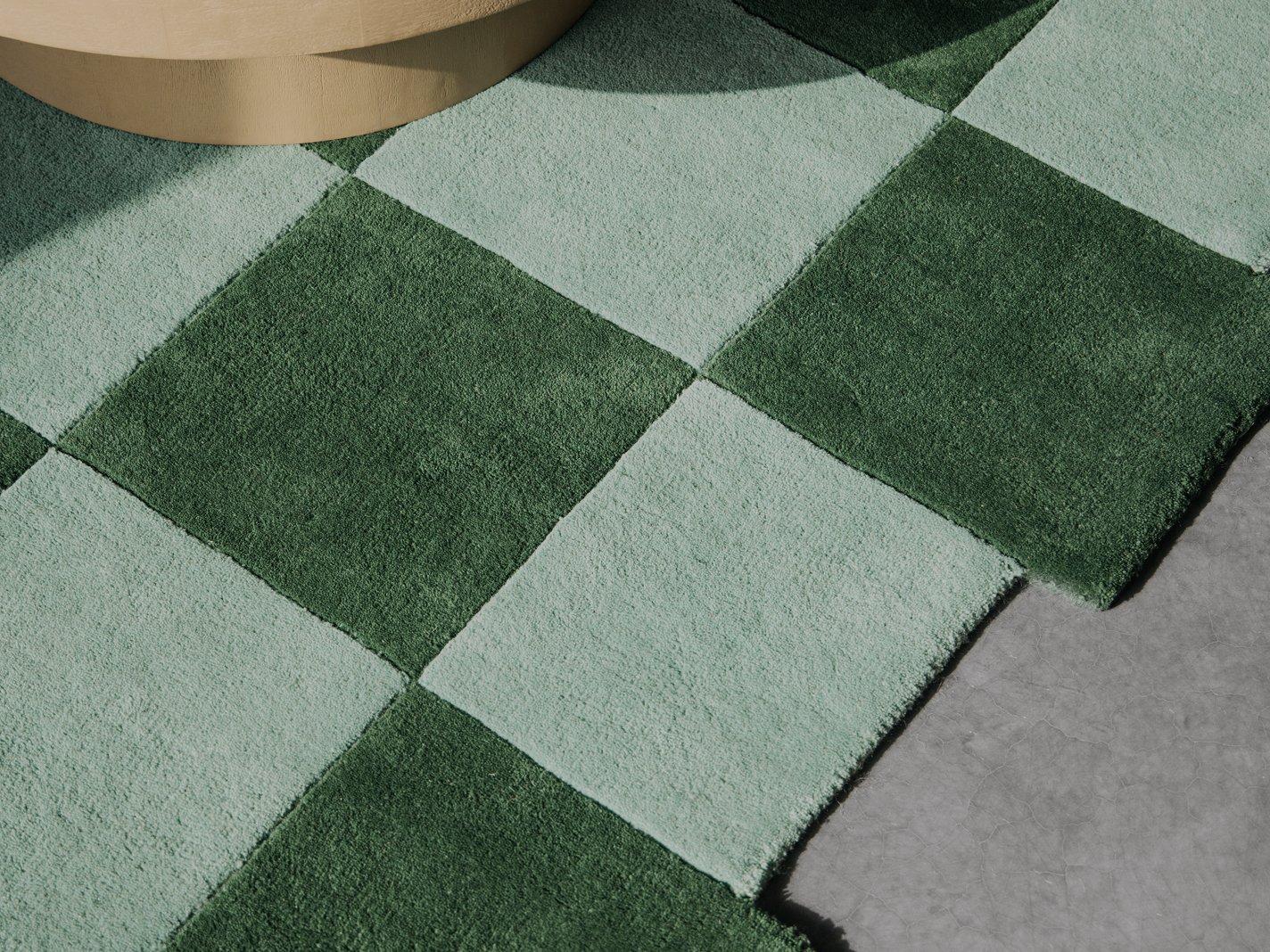How to stop rugs from sliding and slipping
BY MARTINA, RUGVISTA | PUBLISHED: 16/09/24
7 MIN READ
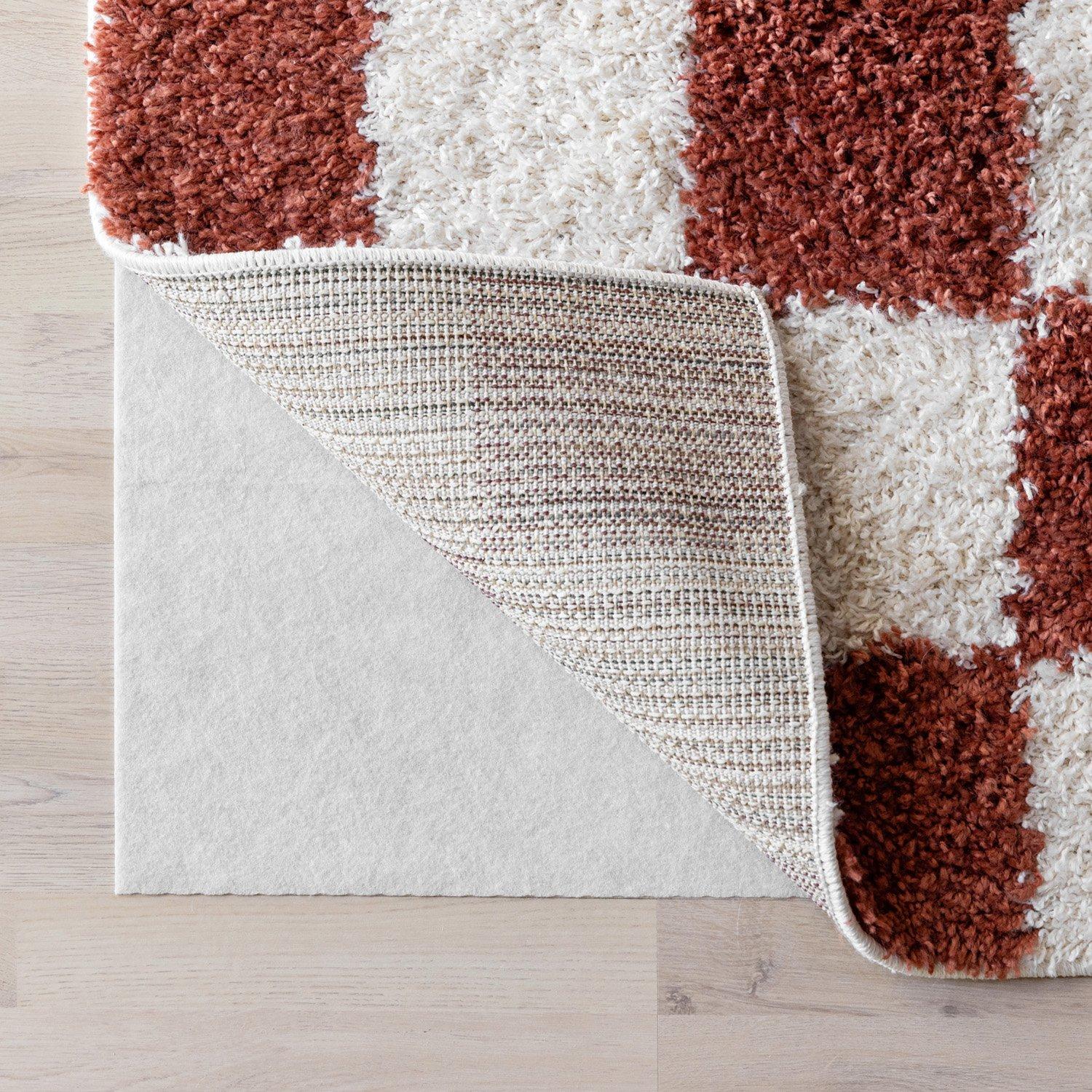
Rugs add warmth, style and comfort. But, their tendency to slide around can be extremely frustrating – not to mention a significant safety risk, especially in households with children, elderly, or pets. Whether your rug is on a wood floor or any other surface, there are solutions to keep it from slipping. So, if you’re wondering how to stop rugs from sliding, look no further! Below, we’ve explored some of the best ways to prevent rugs from slipping and answered some commonly asked questions about rug stability.
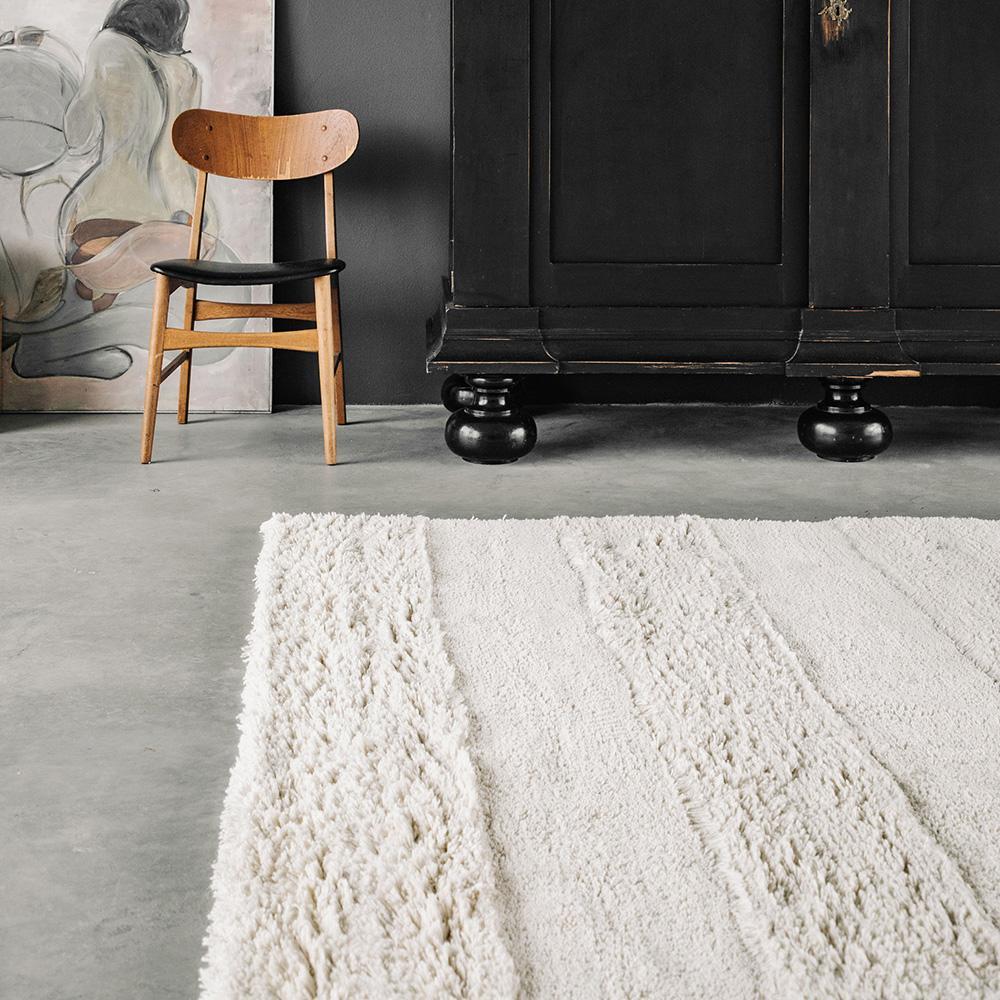
1. Keep it steady with an anti-slip
If you’re not sure how to stop rugs from sliding, adding an anti-slip should be your first port of call. An anti-slip underlay keeps the rug in place and provides increased comfort. One of the best solutions to help rugs from slipping is a non-woven anti-slip or a super-stop.
Non-woven anti-slip materials are typically made from synthetic fibres, such as polyester or polypropylene, which are bonded together without weaving. This creates a durable, flexible fabric that provides a stable base that prevents rugs from slipping. They help to keep rugs firmly in place, reducing the risk of trips and falls. Super-stop is designed as a grid with a soft latex coating, providing both stability and cushioning. This unique construction helps keep rugs securely in place, while the latex coating adds an extra layer of grip and protection for your floors. You can easily cut it to your desired size, and multiple pieces can be combined to cover a larger rug. Both non-slip protections are lightweight, easy to handle, and come in different sizes.
Benefits of anti-slip materials:
Enhanced safety – Anti-slip underlays provide a secure foundation, especially in high-traffic areas, ensuring that your flooring stays in place even with frequent movement.
Protection for floors – Sliding rugs can cause scratches and scuffs on delicate flooring surfaces like hardwood or laminate. Anti-slips act as a buffer between the rug and the floor, helping to protect your flooring from damage.
Preservation of rug quality – Constant movement can lead to wear and tear on rugs, especially along the edges and corners. Preventing slipping through an anti-slip helps to preserve the quality and longevity of your rug.
Easy installation and maintenance – Anti-slip rug pads or super-stops are easy to use—just place them between the rug and the floor. They can be cut to size for a perfect fit, and they require minimal maintenance.
Versatility – Anti-slip materials are versatile and can be used under rugs of all shapes and sizes, from small rugs to large rugs. They’re also effective on various flooring types, including wood, tile, laminate, and even some rugs.
How to keep rugs from sliding: quick tips
- Choose the right pad: Invest in a high-quality rug pad that suits your floor type.
- Regular maintenance: Check and replace non-slip pads as needed.
- Keep the floor clean: Dust and debris can reduce the effectiveness of non-slip solutions, so keep your floor and rug clean.
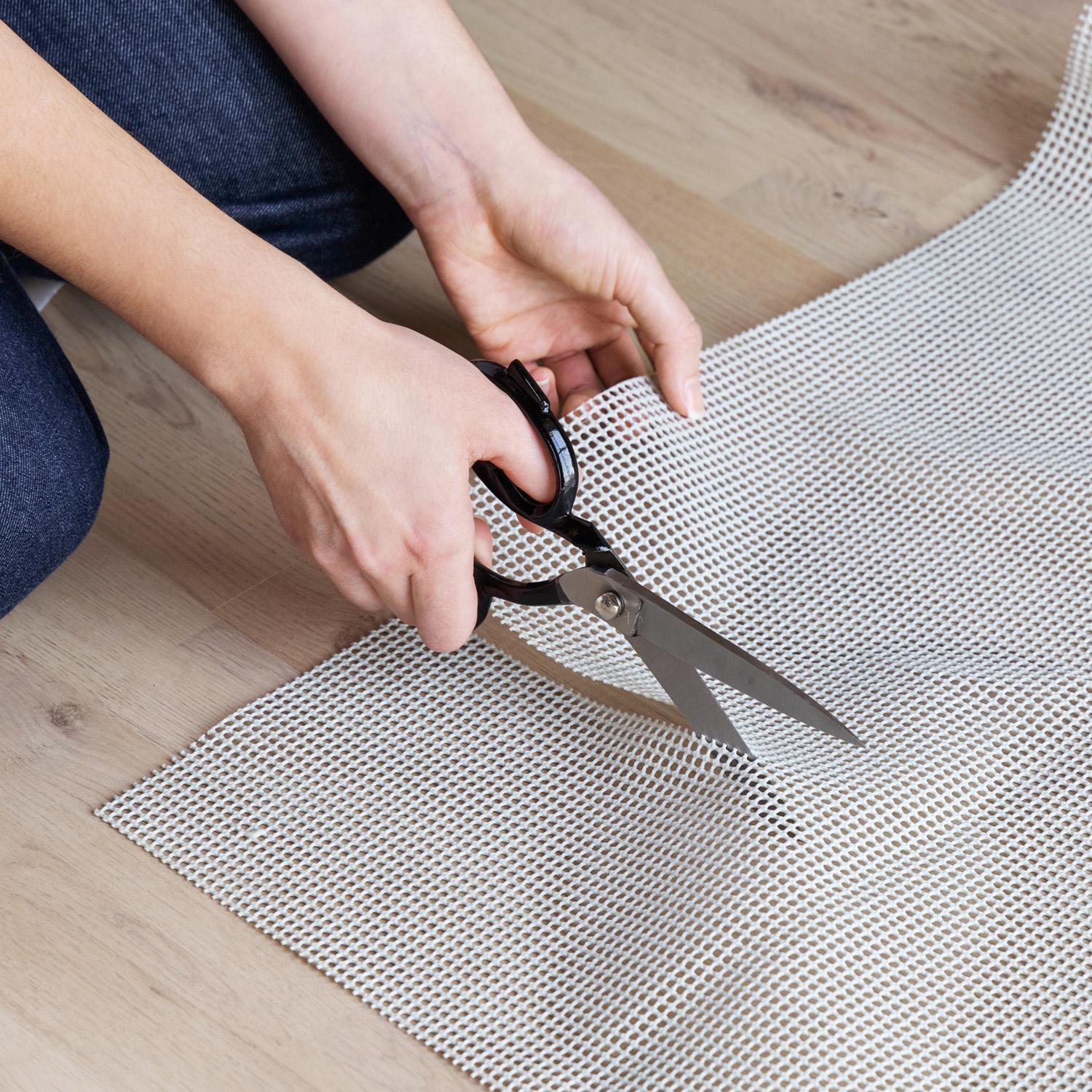
2. DIY hack: Secure your rug’s corners with anti-slip material
This quick and effective method helps keep your rug from sliding and allows for easy adjustments if needed.
- Choose the right material: Select an anti-slip rug pad that suits your rug’s needs. Ensure the material is compatible with your floor type.
- Measure and mark: Measure the size of your rug corners to determine how much anti-slip material you’ll need. Use a ruler to mark the shapes on the anti-slip rug pad.
- Cut the pieces: Carefully cut along the marked lines using scissors or a utility knife. Be sure to protect the surface underneath while cutting.
- Position the pieces: Lift each corner of your rug and place a piece of the anti-slip mat underneath. Position it close to the edge for maximum grip, making sure it remains hidden.
- Press and secure: Press down on each corner to ensure the anti-slip material adheres to both the rug and the floor.
- Test and adjust: Walk on the rug to check if it stays in place. If any corner still shifts, adjust the placement of the anti-slip pieces as needed.
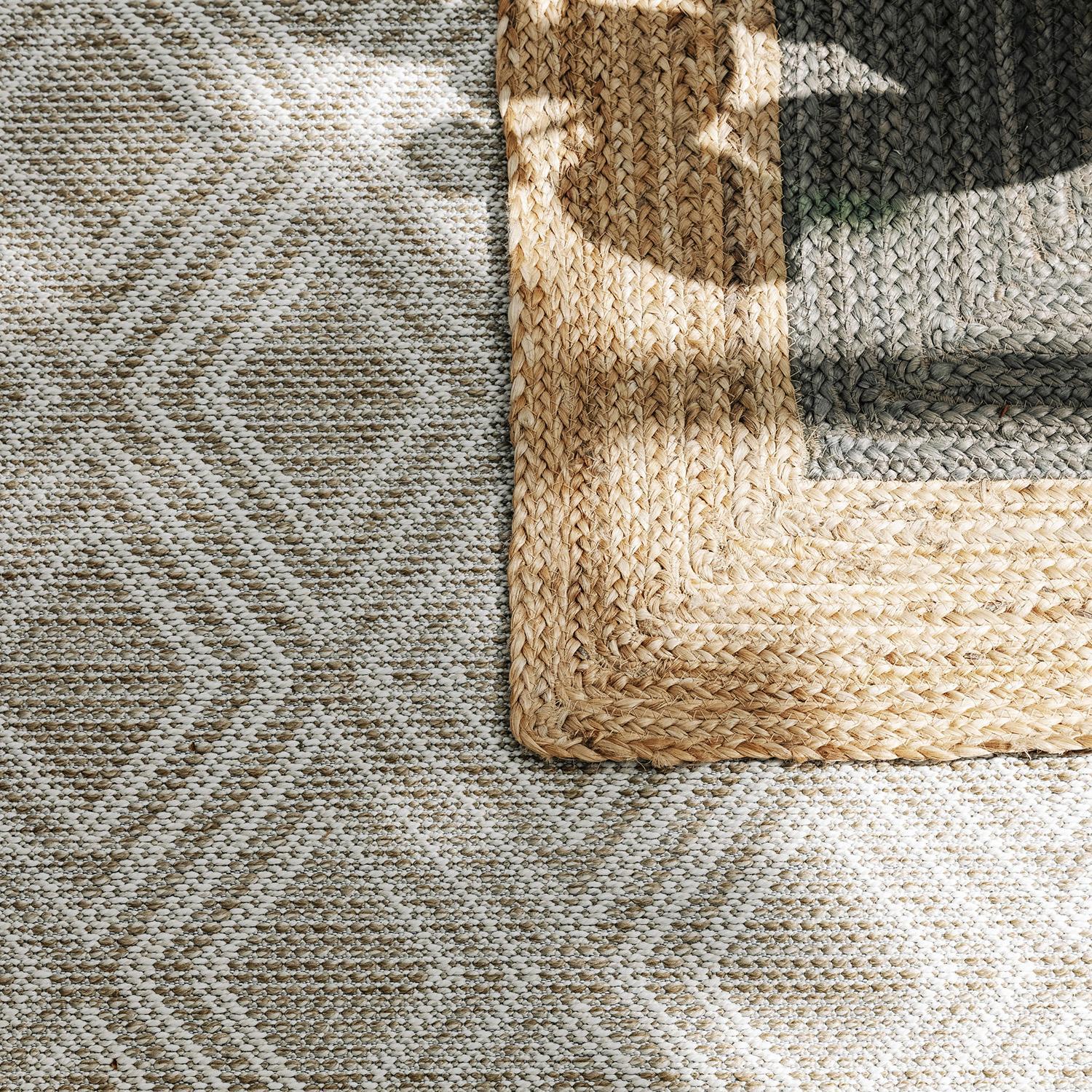
3. How to use an anti-slip on a wall-to-wall carpet
If you have a wall-to-wall carpet with a rug on top that’s sliding, an anti-slip can help to keep the rug from slipping. While wall-to-wall carpeting provides a soft and stable surface, rugs placed on top can still shift, bunch up, or slide, particularly in high-traffic areas. To prevent this, simply place an anti-slip between the two rugs. This will provide extra grip and stability, ensuring that they stay in position without damaging the underlying rug.
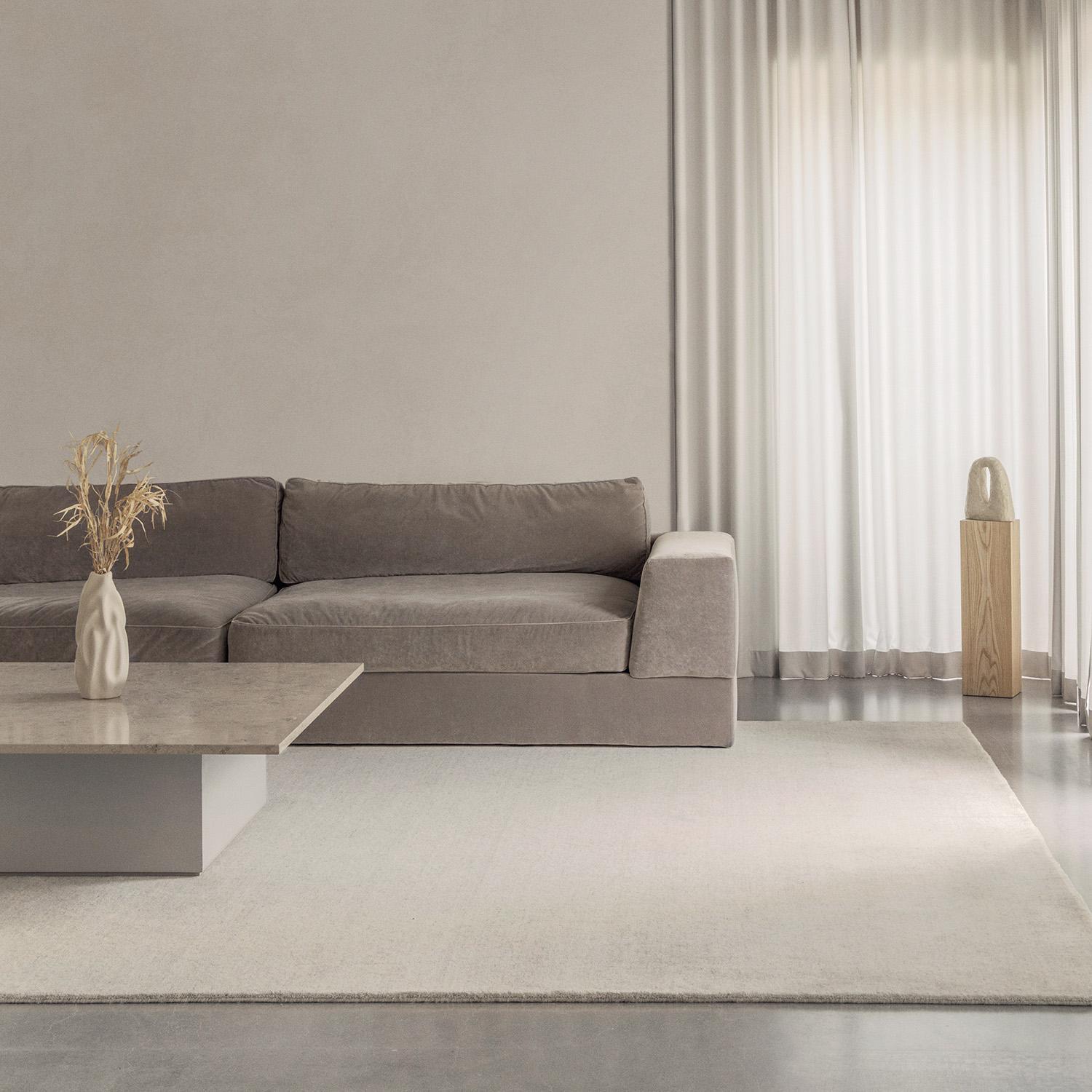
4. Double-sided rug tape and anti-slip – a dynamic duo for a no-slip zone
For added security and to keep your rug firmly in place, combine double-sided rug tape with an anti-slip mat. Follow these steps for a stable and slip-resistant rug setup:
- Position the anti-slip: Place the anti-slip on the floor where you want your rug to be located. Ensure it covers the area where the rug will sit to provide a stable base.
- Apply double-sided tape: Lay double-sided rug tape along the edges and corners of the anti-slip mat. This tape will help further secure the mat and provide additional grip for the rug.
- Place the rug: Carefully position your rug on top of the taped anti-slip mat. Press down firmly across the entire surface of the rug to ensure it adheres well to both the mat and the floor.
- Check stability: Walk on the rug to ensure it remains in place and doesn’t shift. Adjust, if necessary, by repositioning the tape or anti-slip rug pad.

5. Hook-and-loop anchors: the perfect pair to keep your rug in place
Hook-and-loop anchors, commonly known as Velcro, offer an effective solution for preventing rugs from sliding. These anchors consist of two parts: one with hooks and the other with loops. When pressed together, they form a strong bond that securely holds the rug in place.
To use them, attach one side of the anchor to the underside of your rug and the other side to the floor. This connection ensures that your rug stays firmly in position, even in high-traffic areas. The anchors are a practical choice for maintaining rug stability and preventing unwanted movement.

6. Keep your rug in place with corner rug grippers
Rug grippers are practical tools designed to keep your rugs securely in place. Each gripper features a strong adhesive on one side that firmly attaches to the underside of your rug, while the non-slip silicone surface on the other side grips the floor, ensuring stability on various surfaces. The grippers are thin and won’t create visible bulges, maintaining a smooth appearance. Installation is simple: just peel off the backing and stick the grippers to the corners. They are also easy to reposition and reuse without leaving any sticky residue behind.

7. Double-sided carpet tape – the sticky sidekick your rug needs
Double-sided carpet tape is an essential tool when it comes to stopping rugs from sliding. Featuring strong adhesive on both sides, this tape effectively prevents them from slipping, sliding, or bunching, ensuring a smooth and stable surface. To use, simply apply the tape to the underside of your rug and press it firmly onto the floor. This tape is ideal for high-traffic areas like hallways or under frequently used furniture, such as dining tables. It works on various surfaces, including hardwood, tile, and laminate, and provides a reliable grip to keep your rug exactly where you want it.
Choosing the right rug anchors: protect your rug and floor from damage
Before using hook-and-loop anchors, corner rug grippers, or double-sided carpet tape, it’s important to select the right type based on your specific rug and flooring. Different products work best on certain materials, so choosing incorrectly could result in damage to your rug or floor.
Some adhesives may not be suitable for delicate surfaces like hardwood or may leave residue, while certain grippers might not hold well on slick tiles or might damage the rug fibres when being removed. Always check the product’s compatibility with both your rug material and floor type to ensure safe and effective use.
Can you put a rug on carpet?
Yes, you can put a rug on top of wall-to-wall carpet, and people do this for various reasons, such as adding style, comfort, or defining a space within a room. Layering rugs can add texture, colour, and pattern to a room, creating a combination that can be visually appealing.
Which type of floor is the least slippery?
The least slippery type of flooring is typically vinyl flooring with a textured surface. However, to avoid slippery floors completely, adding a rug is the best option. Since rugs can still slip on the floor, it is important to add an anti-slip pad or other solutions to keep it in place and avoid accidents.
Can you get non-slip rugs?
Yes, you can get non-slip rugs. These rugs are designed with a backing or material that prevents them from slipping on various types of flooring, such as hardwood, tile, or laminate.







